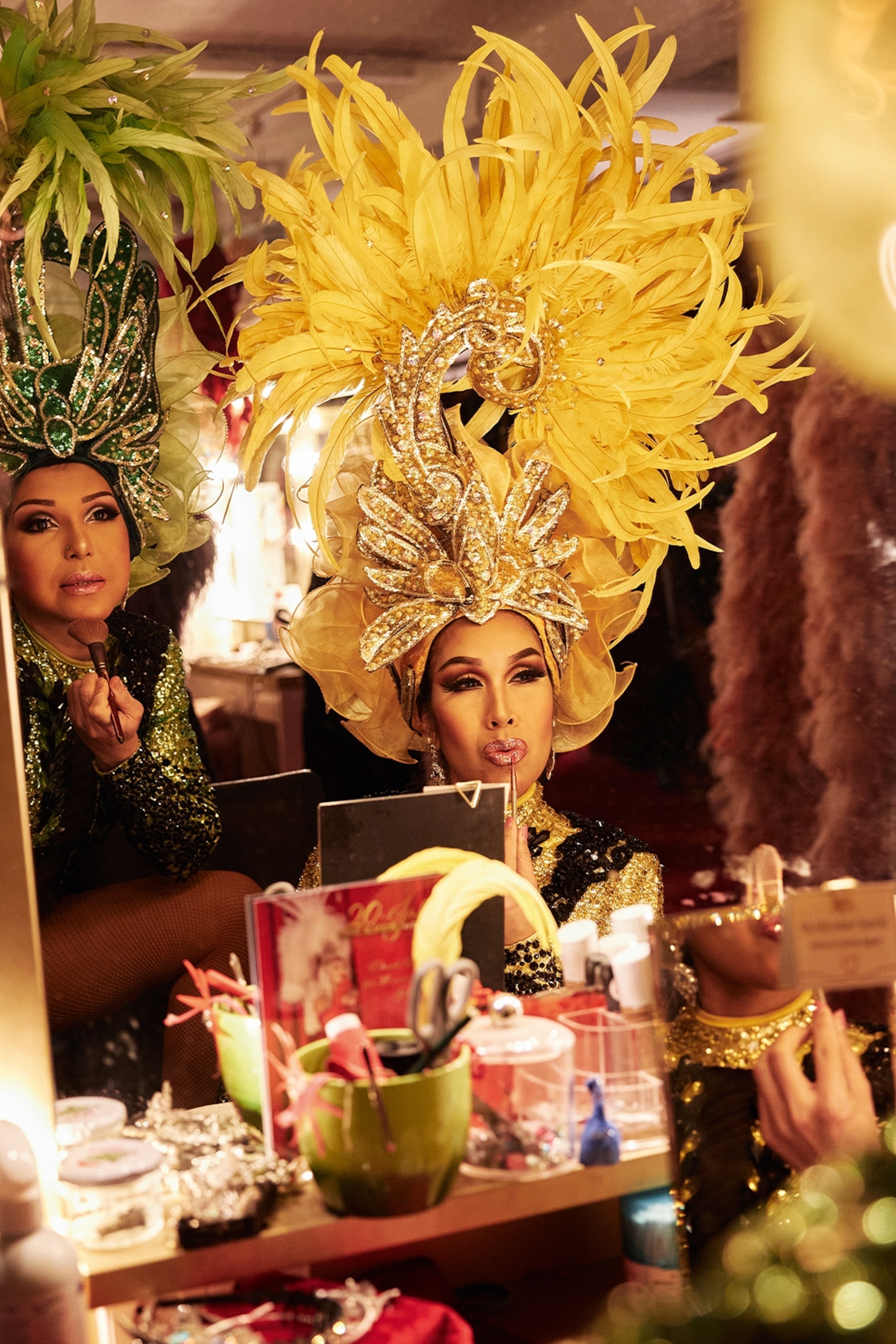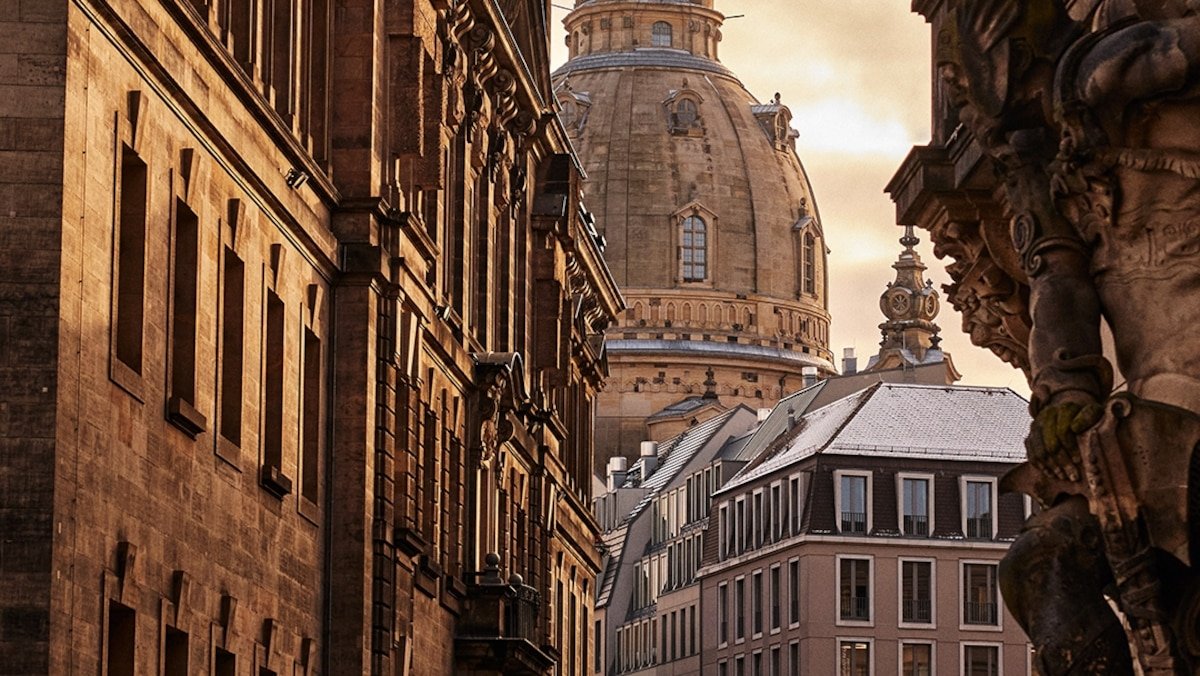This article was produced by National Geographic Traveller (UK).
“Safe travels. And don’t touch the bomb!” It’s a disorientating message to hear crackling through my phone as my Deutsche Bahn train glides through the outer suburbs of Dresden on a chilly, darkening evening. I feel like Billy Pilgrim, the time-travelling protagonist of Kurt Vonnegut’s war novel Slaughterhouse-Five, barrelling headlong into the 1945 firebombing that remains intertwined with the fate of this German city.
But the caller, art historian Dr Rudolf Fischer, is delivering his message with a chuckle. An unexploded Second World War bomb has been uncovered by builders in the Elbe River, and Dresden’s Old Town is to be evacuated while it’s defused. An hour later, Dr Fischer — a smiling, grey-haired man in a dark blazer — is standing before me in the Archiv der Avantgarden, the art museum of which he’s director, just north of the Old Town.
It’s set in an extraordinary edifice known as the Blockhaus. Built in 1732 as a guards’ house by Saxon ruler Augustus the Strong, the building later became a cultural centre, the House of Soviet-German Friendship, during the days between the Second World War and the fall of the Berlin Wall, when Dresden was part of Communist East Germany. It then became a Russian restaurant before falling into ruin and, finally, being converted into a modern conceptual art space in 2024, with a huge, polished concrete cube suspended above the atrium. Today it houses, among other things, around 1.5 million items donated by Italian collector Egidio Marzona. Dr Fischer shows me tubular Bauhaus chairs and desk lamps, expressionist paintings by the 20th-century Dresden art group Die Brücke and blueprints for geodesic domes by experimental US architect Buckminster Fuller.
Over the course of its many lives, and through its fusion of traditional and cutting-edge architecture, the Blockhaus has come to embody the spirit that drives Dresden: the spirit of renewal. Dresden is famous to the wider world for its near-complete obliteration by the British and US air forces in 1945, and for its eventual reconstruction, in the original baroque style, of its historic core.
With the unearthed bomb safely defused, I set out to explore the cobbled streets of the Old Town, admiring the onion dome of the Zwinger palace, the Corinthian facade of the Semperoper opera house and the splendid cupola of the Lutheran Frauenkirche. Today, these buildings look as stately and handsome as they must have done in their 18th- and 19th-century heyday, but they are, in fact, very new. East Germany’s post-war Communist government lacked not only the funds to rebuild most of its destroyed historic buildings but also the inclination — they suited neither its anti-royalist outlook nor its preference for modernist architecture. As such, most rebuilding commenced after the Berlin Wall fell in 1989; the reconstruction of the Frauenkirche was completed in 2005, and the renovation of the Royal Palace is ongoing.
It’s an inspiring and impressive rebuild, but the architecture is only one aspect of Dresden’s cultural renewal, which extends to ancient traditions and modern art forms alike.

Repurposed factory buildings are a common sight in the heart of the city
Photograph by Christian Kerber

Restaurant Anna im Schloss serves traditional East German dishes within the surrounds of the Royal Palace.
Photograph by Christian Kerber
Old methods, modern art
One company dragging Dresden’s traditions into the modern world is Meissen, a high-end ceramics company that, in 1710, created Europe’s first porcelain. In those days it was a bumpy, horse-drawn journey between Dresden and the Meissen factory, 15 miles away, so the products were packed in giant loaves of bread — a kind of edible bubble wrap. Today, Meissen porcelain is a Dresden icon, displayed most prominently in the Fürstenzug, a huge, yellow-tiled mural depicting a procession of Saxon rulers sprawled across an outer wall of the Royal Palace. Unlike most of its neighbouring buildings in the Old Town, this isn’t a post-war reconstruction; the porcelain tiles, having been forged in the fierce temperatures of the kilns, survived the heat of the firebombing. It’s fitting that porcelain is such a well-established symbol of Dresden — combining, as it does, both a delicate beauty and resilience.
I walk alongside the Fürstenzug into Neumarkt, another Old Town square, where Meissen’s modern face is revealed to me from the upstairs window of the company’s boutique: a brilliant-white bust of Marilyn Monroe, revolving on a plinth, her mouth blowing a sphere of bubble gum rendered in pink glass. In the days of East Germany, Meissen produced busts of Marx and Stalin. The Monroe sculpture — a collaboration between Meissen and contemporary German artist Michael Moebius — depicts a cult figure of a different kind.

Ceramics company Meissen created the first porcelain in Europe in 1710 and is in business to this day.
Photograph by Christian Kerber

Art like this bust of Marilyn Monroe on display at Meissen’s shop in Neumarkt, shows the local blend of new and old.
Photograph by Christian Kerber
Moebius’s high-ceilinged apartment and studio is a short walk away, and he greets me at the door, a tall man in his mid-50s with a leather jacket and mop of brown hair. The apartment is filled with artworks reflecting Moebius’s characteristic playful style. Daniel Craig, in full tuxedo, glares down at me from a wall, blowing a huge globe of bubble gum. A full-size Star Wars droid stands in a corner, its robotic fingers gripping a Prada shopping bag. Although it’s not the festive season, the room is illuminated by a fully decorated Christmas tree. “I leave it up all year,” he says with a shrug.
Moebius’s original bubble gum-blowing Marilyn artwork — a hyper-realistic painting — became so widely copied that it now appears on T-shirts and posters worldwide. For the artist, this recognition is just the latest chapter in a colourful life that’s also seen him forcibly serve in the East German army, move to California, and live on and off for 17 years in the Playboy Mansion with his close friend, the late Hugh Hefner. It would have been an unlikely trajectory to imagine for a kid growing up in East Germany, dreaming of the cultural icons of the West.
“Growing up in East Germany gave me a hunger for more,” Moebius says. “My hobby was painting, and I always drew characters from Disney, which was highly forbidden. Symbols like Coca-Cola and Donald Duck were seen as a threat.” It’s poetic that the artist has now combined one of Western pop culture’s greatest symbols, Marilyn Monroe, with the iconic medium of Meissen porcelain, which far predates the trauma dealt to Dresden by the Second World War or the Communist era. “Everyone here grew up with Meissen, this white gold,” he says. “Families would pass it down through the generations. So I couldn’t have dreamed of a better collaboration. It means so much.”
Another of Dresden’s great cultural assets is classical music. The Staatskapelle Dresden, founded in 1548, is one of the world’s oldest orchestras. Baroque opera house the Semperoper was largely destroyed in the firebombing of 1945, but was deemed so integral to the fabric of the city that even the staunchly modernist Communist government opted to rebuild it in its original style, reopening it in 1985. The renewal of the surrounding Theaterplatz square continues apace, with the opening in 2023 of restaurant Opera, set in a mid-century modern space in yet another rebuilt historic structure opposite the Semperoper. The restaurant is run by Benjamin Biedlingmaier, who previously helped Caroussel, another rarefied Dresden restaurant, win a Michelin star for its gourmet cuisine.

The Semperoper is the Dresden’s emblematic Baroque opera house.
Photograph by Christian Kerber

Carte Blanche is Europe’s largest travesty theatre.
Photograph by Christian Kerber
“Here, I had to do something new,” he tells me over a glass of crisp, white Saxon wine. “The idea at Opera is more casual. I don’t want another Michelin star; we want to welcome people in from the street.” The food reflects Benjamin’s interest in fusing traditional German cuisine with wider influences — alongside veal schnitzel with cranberries, I order spiced cauliflower with tahini and pomegranate, followed by a slice of eierschecke, a Saxon cheesecake topped with a layer of vanilla custard.
It’s all delicious, but I can’t linger for long, as I have one final appointment this evening. It’s not just the classical arts that are raising the roofs of Dresden’s historic, resurrected buildings. In the nightlife district of Neustadt (‘new town’), a former dairy building now houses Carte Blanche, the largest theatre in Europe for travesty — a type of burlesque drag theatre. The show unfolds in a blaze of sequins, diamanté tiaras and lavish costumes, the performers rolling skilfully through a setlist of jazz, vaudeville and French pop standards: an artful take on the drag medium. “There’s a bit of a difference between travesty and drag,” performer Josi Diamond tells me backstage after the show as she removes her 1920s flapper make-up in the mirror. “Travesty is the older art form. We sing chansons. And there are more feathers.” This last line is delivered with the kind of understatement not typically associated with drag queens — there are so many feather boas hung on every nearby surface it feels like we’re inside a huge down pillow. “We have a big theatre scene in Dresden,” Josi says. “It’s not just the Semperoper, but smaller theatres, too. It’s a great place to express yourself artistically.”
Nowhere can escape the past, and this is particularly true of Dresden. The clink of hammers still carries across the Neumarkt from workers restoring the Royal Palace, 80 years after its destruction — and, as I learned on my first day in the city, relics of war still lurk beneath the surface. But this isn’t a place mired in its history — it’s one looking to the future, where the tragedies of the past are stoking the fires of rebirth.
Published in the April 2025 issue of National Geographic Traveller (UK).
To subscribe to National Geographic Traveller (UK) magazine click here. (Available in select countries only).











